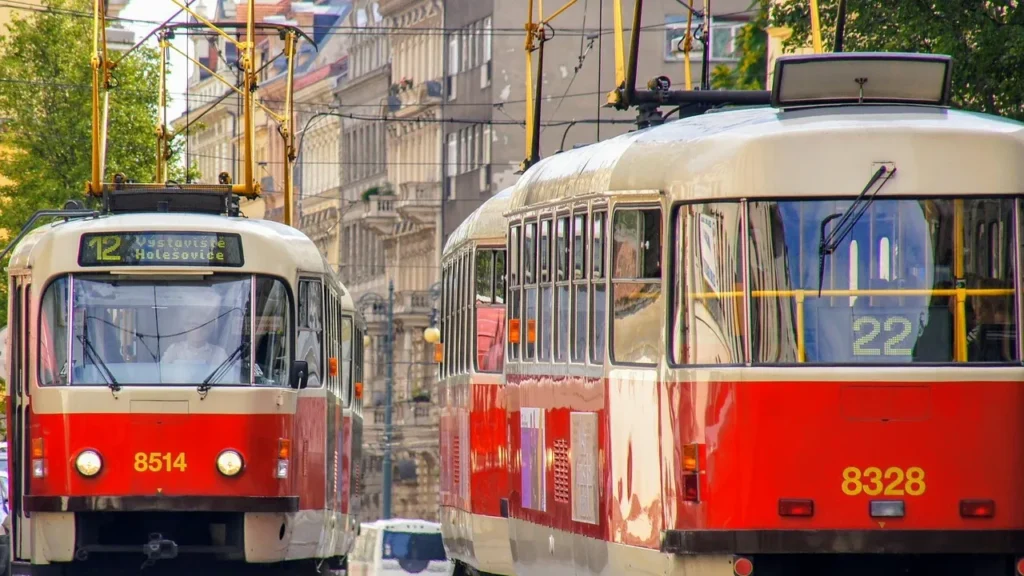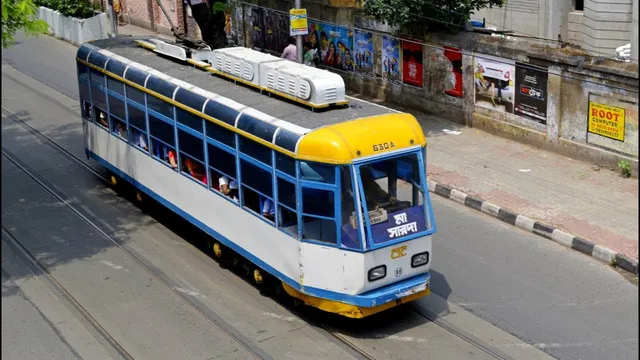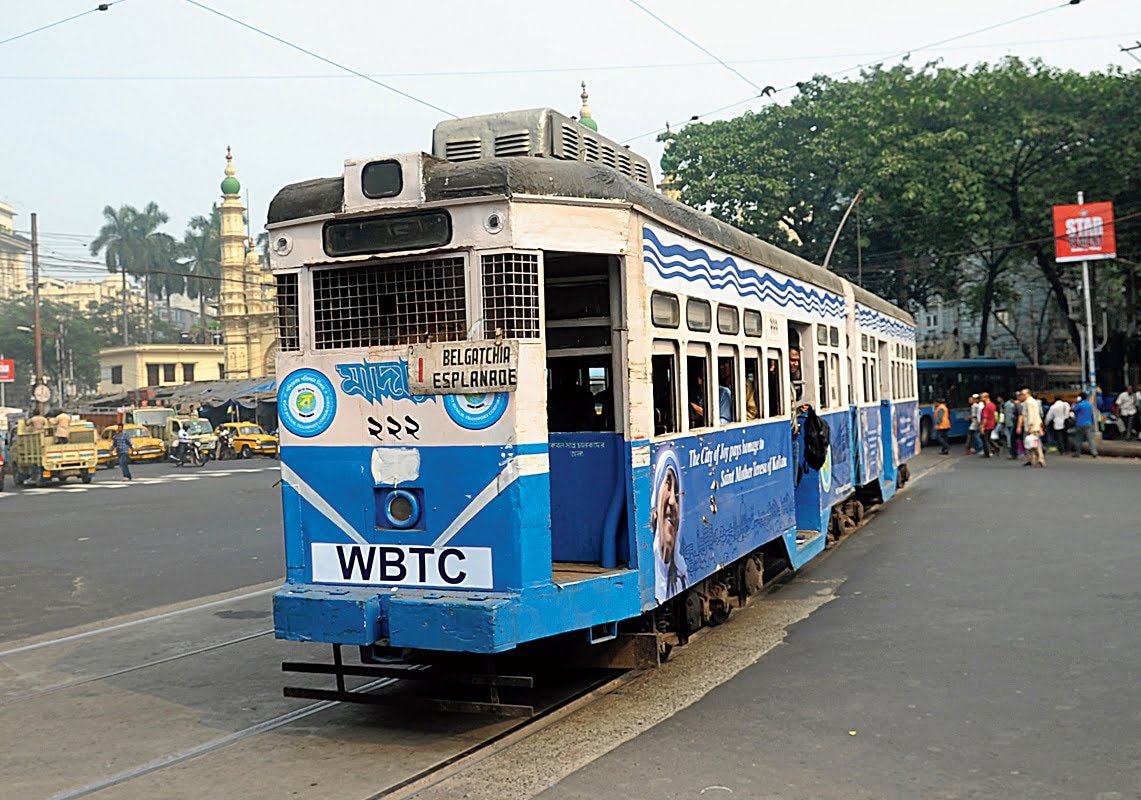| In Short |
| The West Bengal government plans to discontinue most tram services in Kolkata, retaining only a short heritage route. |
| The decision has sparked protests, with residents and heritage enthusiasts demanding the preservation of the tram network. |
| Trams are seen as an iconic symbol of Kolkata’s cultural history and many fear losing a part of the city’s identity. |
| Trams offer eco-friendly transportation and discontinuation might increase traffic and pollution. |
| Many suggest upgrading the tram system instead of discontinuing it, to balance heritage with progress. |
For the past hundred years, trams have symbolized the history and heritage of Kolkata. These rickety tramcars still maneuver through Kolkata’s congested roads and remind one of the city’s colonial past. Recently, news regarding their eventual discontinuation, except for a short stretch as a heritage route, has caused tremendous unrest, even protests about the route of preservation of this iconic mode of transport.
Government’s Move to STOP Tram Services
The Tram Services will be largely done away with in Kolkata, announced by the government of West Bengal. While listing out its reasons for the discontinuance of the service, aged infrastructure was evident at the top of the list, followed by traffic congestion and the need for modern solutions for transportation. Only one short heritage route would be retained for the purpose of demonstrating the historical connection of this city with this form of transport.

This is on the heels of several decades characterized by relatively low utilization of trams, as more convenient and speedier alternatives to public transportation become available, including the metro as well as buses, among others. The government purports that running the tram transport network is economically unsustainable; in this regard, limiting its use forms part of its greater effort at improving the transport system of the city.
Public Demarche and Demonstrations
This news of the tram service shutting down has not gone well with the people of Kolkata, especially those among them who share an understanding of trams as part of their cultural identity. Citizens, activists, heritage enthusiasts and lovers of the trams are out on the streets demanding that the entire network of tram services should be kept alive. Many regard the trams as nothing less than a connecting means to the past of Kolkata and just the iconic face of a slower, graceful life in an otherwise fast-changing city.

Protesters have mentioned that trams are also ecologically friendly and form a sustainable way of transportation and removals of the trams would leave behind not only the part of Kolkata’s history erased but also pollution and traffic congestion would increase.
The Heritage Route: A Double Nod to Nostalgia
As the government is trying to merge modernization with heritage preservation, the final conclusion has been taken to have only one short heritage route. The route would be run more or less like an attraction for tourists so that people can experience a ride through Kolkata’s historic streets. Even though it is appreciated by people by some, many think this cannot capture the true essence and significance of trams in the city’s life.
There will be heritage routes covering all the most important landmarks in history. That would also become a uniqueness to the tourists and locals alike. This venture is meant to remind the people of the golden era when the tram was the lifeblood of Kolkata’s public transport system.
Why Trams Matter: A Slice of Kolkata’s Soul
The only Indian city with an operating tram network, Kolkata has a unique feature among the urban vistas of the nation. Started in the 19th century, the tram network endured years of changes-the British, then India’s independence and so on.
For most Kolkatans, the trams are something much more than any kind of transport; they epitomize lifestyle. Literature, cinema and art have immortalized them. They show the essence of the city identity. In contrast to fast-moving life in an ever-changing city, the slow ‘clatter’ and the charming vintageness of the trams symbolize connection with life always seemingly slower and more tranquil.
Economic and Environmental Impact
The trams, as a mode of transport, are known to be green. They pollute nothing and are replete with electricity. Discontinuing the tram service may increase the plying of automobiles on the roads-the indirect results of which will increase carbon emissions and worsen the problem of Kolkata’s traffic congestion. Environmental activists fear that the city might lose a sustainable transportation option, urging the government to look into ways to modernize the tram system instead of phasing it out.
More than that, the decision might impact on the jobs of people who have been working with the tram service for decades. Among them are the drivers, conductors and maintenance personnel. This aspect has raised further debate as to how the government would support those people when the transition both during and after comes through.
Upgradation Slogans instead of Abolishment
All residents and experts believe in extension of the tram network with modernizing and upgrading efforts instead of abandoning the tram services. They speak of faster and more efficient trams, better track maintenance, the integration of tram routes into other public transport and so on. Such measures may well revive the tram system, making it available and attractive for current and potential commuters, while preserving its heritage value.
These modernized urban trams worldwide have proved the efficiency of such systems in modern times, thereby vindicating the viability of such systems into the modern urban transportation system of cities.
The Future Scenario: Heritage and Progress Altogether
Is the discontinuation of most of its tram services something right for Kolkata, something that brings into discussion issues related to the ability of cities in striking a balance between preservation and modernization? While clear it is that trams are no longer, or at least not primarily, the transport mode, their cultural and historical importance cannot be overlooked.
The heritage route under the government is, therefore, but a step toward preserving this heritage; however, there has been increasing pressure on the necessity of a complete discontinuation. Many hope that through public dialogue, government initiatives and innovative solutions, a way can be found to keep the trams running without compromising on the city’s progress and development.
Preserving the Heartbeat of Kolkata
This would mark a historic moment in the city as the much-needed end of its tram service. With protests still going on and debates raging on, one thing is apparent: for many of its denizens, trams are not just an object of transportation but more like a used and loved symbol of Kolkata’s identity. The decision to eliminate them must be taken very seriously against the background that preservation of not only an outdated system but also a dearest and essential component of the city’s soul is badly needed.
For Latest News Updates Click Here
